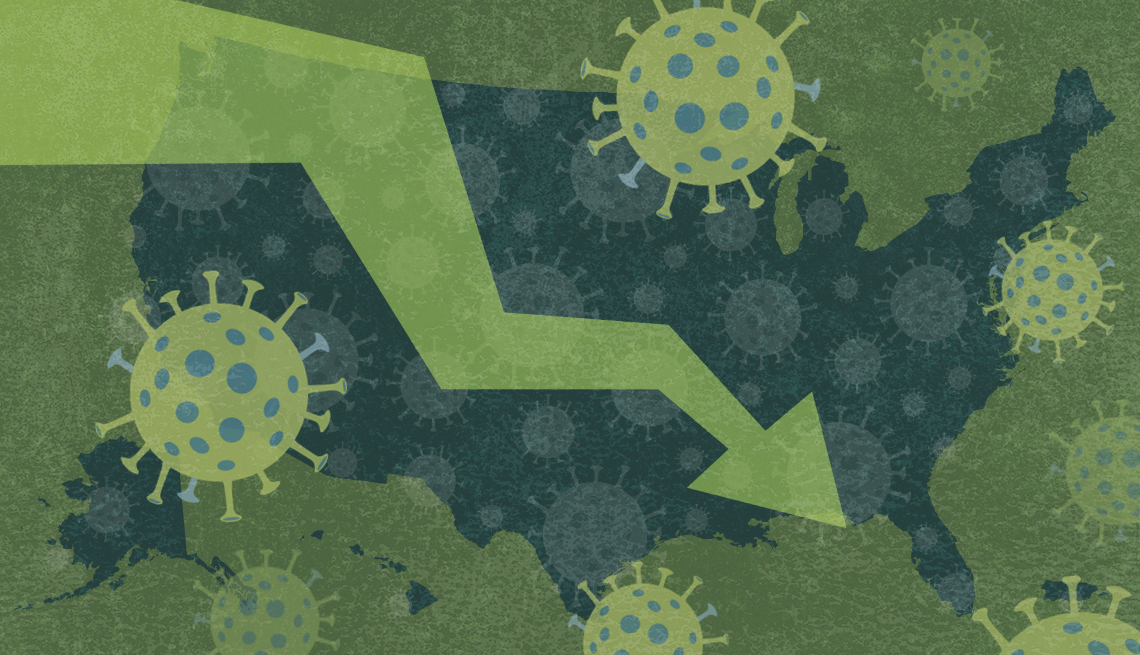
2 years of covid — by the numbers
- Select a language for the TTS:
- UK English Female
- UK English Male
- US English Female
- US English Male
- Australian Female
- Australian Male
- Language selected: (auto detect) - EN
Play all audios:

Many people who get sick with COVID-19 are able to manage their symptoms at home, but not all. Roughly 4.5 million Americans have been hospitalized with COVID-19 since August 2020.
Hospitals have borne a heavy burden these past two years with the influx of illness, and the toll has been especially great on health care workers, who have been overwhelmed and
personally affected by the virus. Nearly 1 million of them have been infected, and more than 3,600 have died from COVID-19, according to the CDC. Getty/AARP COVID-19 has highlighted health
inequities that have long persisted in the U.S. by disproportionately affecting racial and ethnic minority groups. American Indian and Alaska Native individuals, for example, are 3.2 times
more likely to be hospitalized with COVID-19 than their white peers. That figure for Black Americans is 2.5, while Hispanic or Latino individuals are 2.4 times more likely to be
hospitalized for COVID-19 than white individuals. Asian Americans are also more likely to get severely ill from COVID-19 and succumb to the disease than their white peers. Several factors
influence health equity, the CDC says, including discrimination, access to health care, income gaps and housing. Getty/AARP Testing turned a corner in the spring of 2021 when rapid at-home
tests first hit store shelves. And it turned again in January of 2022, when the government said it would require private insurance and Medicare to pick up the tab for the over-the-counter
kits (Medicare’s program is expected to start in early spring) and that all Americans could get four free tests from the federal government (four more will be available beginning the week
of March 7). Experts say accessible, convenient testing is key to helping slow the spread of the virus. It’s also critical when it comes to treating COVID-19, since the new antiviral pills
that can keep the disease from progressing work best when taken soon after symptoms start. Getty/AARP Love them or hate them, masks have been a major part of the pandemic since the spring
of 2020. They could play a less prominent role this spring in many areas of the country, based on the latest guidance from the CDC, but don’t expect them to go away completely. Some experts
predict they’ll come in handy during seasonal illnesses, like the flu. Plus, many people who are immunocompromised or otherwise at high risk for severe illness will opt to keep them on.
Consult with your doctor if you have questions about your risk and the dangers in your community. Getty/AARP Work culture has changed drastically since March 2020. Many employees have
voluntarily resigned from their jobs or have switched careers completely. And lots of older adults have retired — in the past two years, the population of retirees 55 and older grew by 3.5
million, according to Pew Research Center — even if they had planned to work a few years longer. A recent AARP survey found that among those who had left the workforce, 1 in 5 retired
earlier than planned because of the pandemic. Millions of U.S. adults have also lost their jobs due to the pandemic. _Rachel Nania writes about health care and health policy for AARP.
Previously she was a reporter and editor for WTOP Radio in Washington, D.C. A recipient of a Gracie Award and a regional Edward R. Murrow Award, she also participated in a dementia
fellowship with the National Press Foundation._
